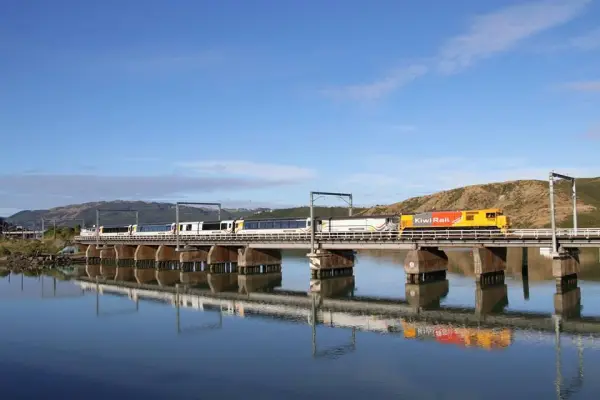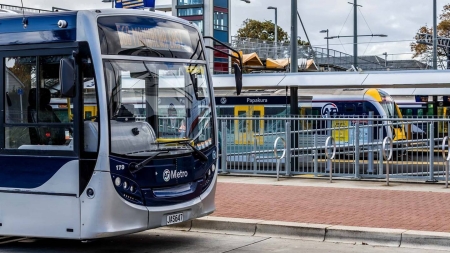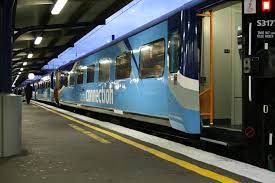Opinion - For a while KiwiRail looked like it was going to ditch long distance trains and start offering tourist rail excursions. Now it has announced it is bringing back the Northern Explorer and Coastal Pacific trains in September 2022. But with fares of $219 per person for an Auckland to Wellington trip, these services are unaffordable for ordinary New Zealand families or young people. They are aimed at tourists, presumably mainly overseas tourists.
Why does KiwiRail want to be a tourism operator? In doing so, it is competing with existing rail excursions offered by railway enthusiasts in many parts of New Zealand. These excursions attract both local and international tourists and are important for bringing in the money needed for restoration projects.
The many rail enthusiasts throughout New Zealand have a nostalgia for the trains that once ran on our networks. It is also a nostalgia for a once thriving local train building industry.
In my own hometown of Paekākāriki, there is Steam Incorporated. Since the 1970s, Steam Incorporated has brought together a large collection of locomotives and passenger carriages. These include seven steam engines, four main line diesel engines, and carriages from various periods of rail travel. Steam locomotives include the World War I Memorial Locomotive ‘Passchendaele’. This locomotive, designed by New Zealand Railways, was built in 1915, and only withdrawn from service in 1967. Following restoration, it is now certified for operation on the national rail network.
Further south on the main trunk line at Plimmerton is Mainline Steam. It too has a number of steam and diesel engines, as well as reconditioned carriages. It is currently developing a new depot at Mercer, south of Auckland.
Not far away in the Hutt Valley is the Silver Stream Railway. In 1967, the Wellington branch of the New Zealand Railway and Locomotive Society (which changed its name to Silver Stream Railway Incorporated in 1983) began a collection of locomotives and rolling stock.
Across the Remutuka Range, in the northern Wairarapa, there is the Pahiatua Railcar Society. Once, New Zealand built trains. These included unique railcars that ran along regional rail networks. Six ‘Standards’ were built in the NZR Hutt Workshops in 1938 and 1939, each with a semi-streamlined design featuring slanting ends. Each car had two compartments, the larger with 36 seats (second class) and the smaller with 12 seats (first class) or 16 seats (second class). The first two railcars were initially first and second class but, later, became second-class only.
In December 1972, three Silver Fern Railcars, built overseas, entered service on the Wellington to Auckland daylight run. Two decades later, in 1992, the 'Ferns’ were used on two new services; Auckland to Rotorua and Auckland to Tauranga. These tourist-oriented services lasted until 2001.
These are just some of the rail organisations in the lower North Island that are restoring former New Zealand Railways trains. Many other regions are also doing similar things. For example, in 1970, Auckland’s Glenbrook Vintage Railway was founded to preserve, rebuild, and operate the old Waiuku Branch Railway between Glenbrook and Waiuku.
Not only do volunteer groups within these organisations preserve New Zealand’s rail heritage, most also run rail heritage excursions. Popular trips in the central North Island include the Raurimu Spiral and, in the lower North Island, through the Manawatū Gorge. These excursions are important fund raisers, especially for rail enterprises in small towns such as Pahiatua. While they focus on attracting locals, international rail aficionados often join the outings.
In the South Island, Dunedin Railways offers “world class train trips’. Best known is their ‘Inlander’ service which, prior to Covid-19, ran up the Taieri River Gorge. The trip targeted the international tourist market.
New Zealand could become much better known for its rail-based tourism. But it does not need KiwiRail to start competing. Like the highly successful National Cycleway Network, there could be heritage rail experiences across all regions where tracks still exist. The foundations for this are already in place.
But to decarbonise our transport sector we also need efficient, fast, affordable and frequent regional rail. Rail enthusiasts can celebrate the past. KiwiRail should be looking to the future and concentrate on rebuilding its long-distance train network.
An opinion by Paul Callister originally posted on The Transperts on 2 May 22.
Dr Paul Callister is a senior associate at the Institute of Governance and Policy Studies. Paul’s current research centres on climate change policy with his main focus is on sustainable transport.
This article has been republished on publictransportforum.nz with permission from the original author.

Rail tourism: Please KiwiRail leave it to the rail enthusiasts
Published on 4/05/2022 at 10:24 pm.


